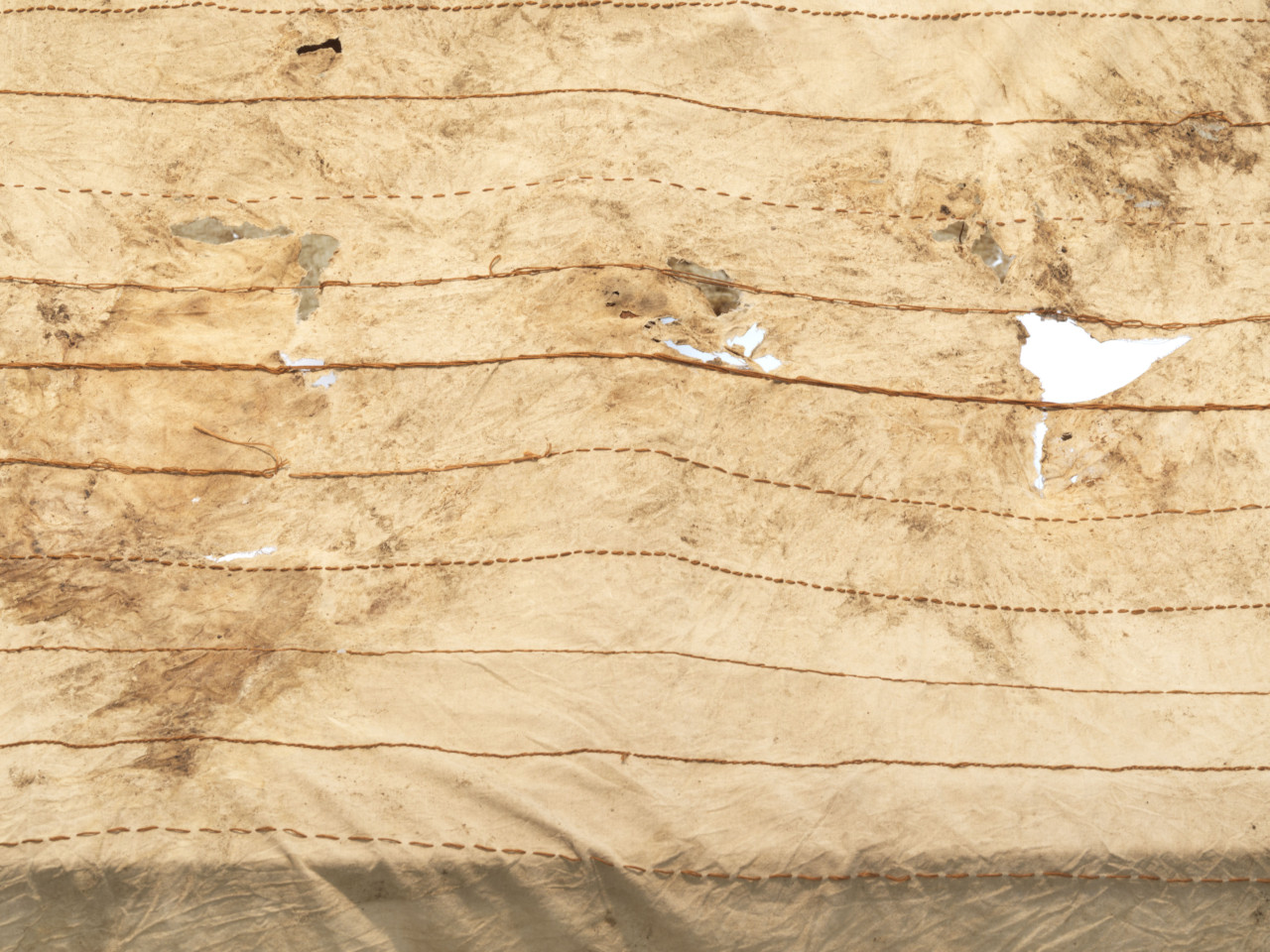


Teresa Margolles, Sutura, Fabric from Guadalajara, 2011 / Intervention on fabric, Berlin 2018 ©Jens Ziehe
If you happen to be in Berlin in the coming weeks, I highly recommend you visit Teresa Margolles’s exhibition Sutura. At the daadgalerie, the gallery space of the DAAD (German Academic Exchange Service), the acclaimed Mexican artist presents her new projects Sutura, Los Otros (The Others) and La Gran América (The Great America). All works were created in Berlin when she was a DAAD artist-in-residence last year.
Margolles studied Communication Sciences and Forensic Medicine before becoming an artist. Working with photography, video and performance she often engages with the social causes and consequences of violence and death – especially in relation to her home-country Mexico and the impact the ongoing organised drug war has on Mexican society.
The installation Sutura, 2011/18 consists of a large-scale piece of cloth onto which horizontal lines are stitched with red thread, laid out on a wooden structure. When reading the accompanying information we learn that the brown-stained, partly broken fabric was originally used to wipe the blood of a woman who was murdered in the street in Guadalajara, Mexico.
Surprised to meet so many immigrants from Mexico and Latin-America in Berlin, Margolles became interested to learn more about their individual backgrounds and stories. Between October 2017 and May 2018 she invited 14 Berlin-based immigrants from Latin America to come to her studio. First, without being prepared, the participants were confronted with the fabric and its history. Then they were asked to embroider a red straight line into the cloth for the duration of one hour without talking. After this meditative process they were encouraged to recount their own experience of violence, death and loss in their home-countries and their situation today when living in Germany as foreigners.
The tradition of stitching which plays an important part in Latin American indigenous culture is here reduced to an abstract red line. However, each person’s individual hand-writing is still visible and it seems as if their narratives of violence and migration are woven into the fabric. In the sound-installation Los Otros (The Others), 2018 we can hear the participants narrating excerpts of their stories in Spanish through speakers in the wall. The sitters full stories were recorded, transcribed and printed and are available in the exhibition in the form of a printed booklet in English, Spanish and German, also called Los Otros (The Others).
The installation La Gran América (The Great America), 2018 is made of 1,000 handmade ceramic tiles, forming a large grid on the wall at the back of the exhibition space. The tiles are made from clay that was extracted from the Rio Bravo (known in the US as the Rio Grande) and formed in the border town of Ciudad Juaréz. Both locations are symbols of traumatic experiences of escape and migration. La Gran América can be read as a memorial to the countless migrants, who die every day when trying to cross the river but also for the people who managed to survive.
The form and size of the tiles reflect on the German ‘Erinnerungskultur’ (culture of commemorating) by referencing the ‘Stolpersteine’ (stumble-stones) that one can find on the pavement in front of houses throughout German cites to remember victims of the Holocaust who lost their homes and lives during the Second World War.
Overall, Margolles works relentlessly against the forgetting of those who have died by confronting the viewer with the traces of what people have left behind. The outlook of the show is reduced and minimalist, yet Margolles’s quiet works seem to ask very powerful questions: How do we remember the victims of trauma? How can we deal with loss? How can we challenge the anonymisation of death and the disappearance of bodies? Questions that seem even more relevant against the backdrop of last week’s events commemorating the victims of the Grenfell Tower disaster, who died in the fire a year ago.
Christine Takengny
Curator
daadgalerie, Oranienstraße 161, 10969 Berlin, Germany. Open Tuesday - Sunday, 12.00 - 19.00. Exhibition continues until 22 July 2018. www.daadgalerie.de